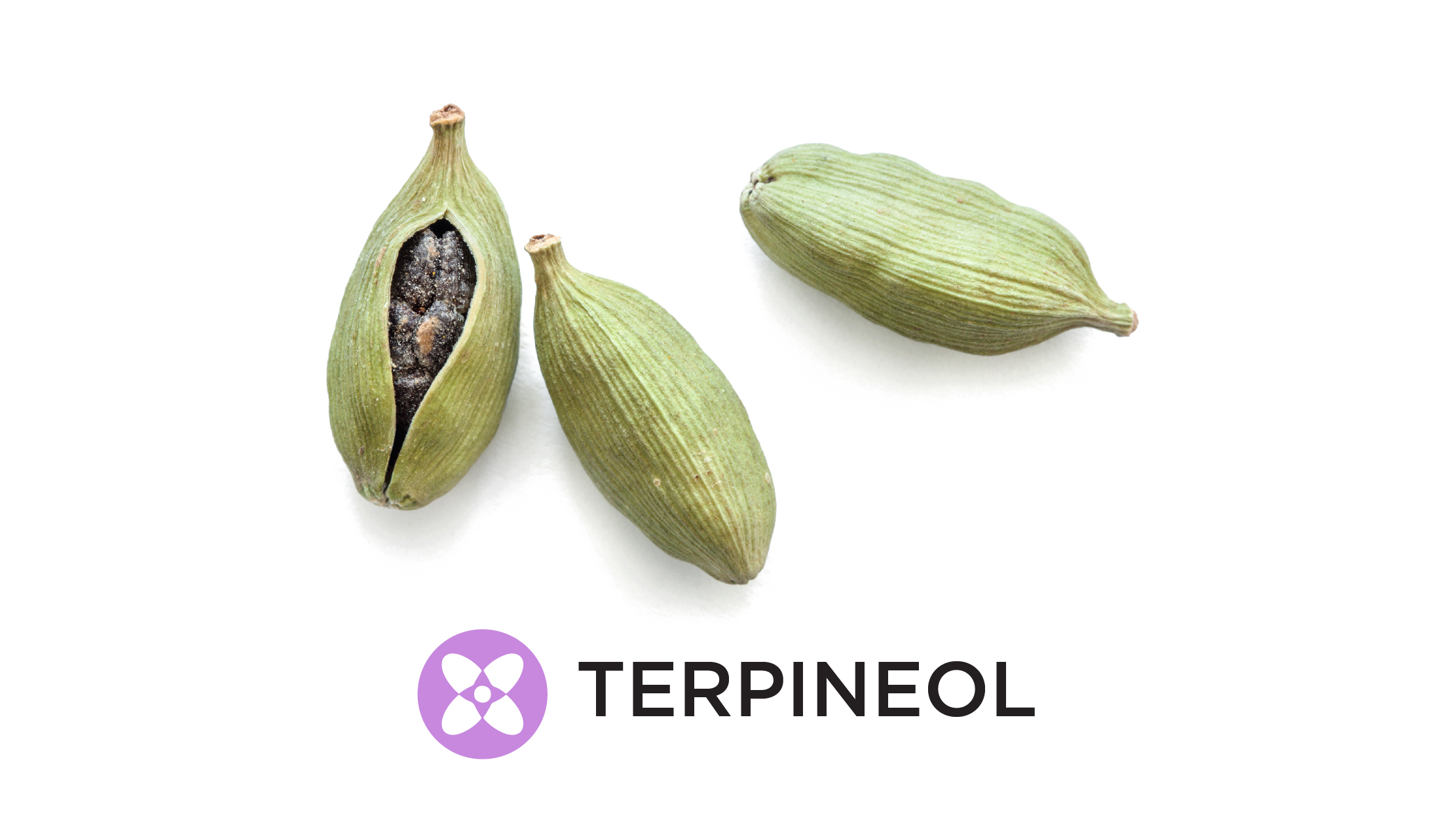A group of four monoterpene alcohol isomers. The most common form of terpineol is alpha-terpineol (a-terpineol). Terpineol occurs naturally in more than 150 plants, including cannabis, lilacs, lime blossoms, eucalyptus sap and pine trees. The terpene has exhibited a number of therapeutic qualities, such as anti-inflammatory, antioxidant, antitumor, and antimicrobial.
I feel like I'm in a lime grove in Florida when I smoke weed with terpineol.
Inhaling the essential oil with terpineol made her feel like she was in a field of lilacs.
More about terpineol
Plants containing terpineol have been used for centuries as natural remedies. For example, the lime blossom, also referred to as the linden flower, was used in traditional European medicine to treat colds, coughs and flu. In tea form, the lime blossom has been called the “nectar of kings” for its soft, sweet scent and perceived health benefits. Folk medicine continues to make use of terpineol while the aromatherapy industry has also channeled the terpene. Research is emerging on potential medical usages.

Image lightbox

Terpineol in everyday life
You may have used a personal product, such as soap, lotion, or perfume that contains aromatic terpineol presenting with a gentle lilac profile. Tea drinkers may also have experienced the pleasant scent of terpineol through lapsang souchong tea that emits a pine smoke aroma. You may have tasted terpineol too since it is used as a flavoring agent in baked goods and condiments.
Therapeutic properties of terpineol
Terpineol, specifically a-terpineol, has demonstrated anti-inflammatory, antioxidant, antitumor and antimicrobial properties.
Anti-inflammatory
The terpene has shown anti-inflammatory qualities in several scientific studies, including one published in 2007 in the Journal of Agricultural and Food Chemistry and another published in 2010 in Basic & Clinical Pharmacology & Toxicology. The latter study yielded encouraging results for a-terpineol's potential as a component of new medications to treat painful and/or inflammatory diseases.
Antioxidant
Researchers conducted comparative tests on the antioxidant effects of a-terpineol and two other terpenes: carvone and perillyl alcohol. The results, published in 2011 in Food and Chemical Toxicology, indicated that a-terpineol had the strongest antioxidant effect, comparable to commercial antioxidants. The scientists who led the study found the outcome to be encouraging for future studies regarding the possibility of a-terpineol fighting certain types of cancer, notably breast cancer and chronic myeloid leukemia.
Antitumor
A-terpineol's potential effectiveness against cancer was also explored in a 2010 study published in Anticancer Research. The results of the study suggested that a-terpineol inhibited the growth of in vitro cancerous tumor cells, especially those of small cell lung carcinoma.
Antimicrobial
A 2012 study published in the journal Anaerobe found that a-terpineol exhibited strong antimicrobial activity against oral bacteria. Researchers recommended low levels of a-terpineol in conjunction with linalool to be incorporated into toothpaste or gargling solutions.
The role of terpineol in cannabis
Among the cannabis varieties that contain high levels of terpineol are White Widow, Jack Herer, OG Kush and Girl Scout Cookies. The terpene is often found in varieties of cannabis that also contain high concentrations of pinene, whose aromatic effects are typically stronger than those of terpineol. Some perceive cannabis with terpineol to have a relaxing or sedative effect.
Bottom line
Releasing a pleasant but subtle lilac or lime aroma, terpineol may offer multiple therapeutic benefits, including for its potential in treating cancer.

